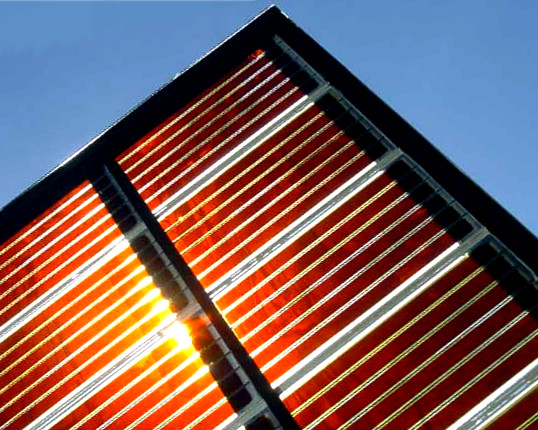Solar city could self-power
 Covering buildings in solar panels could see Melbourne generate almost all the energy it needs.
Covering buildings in solar panels could see Melbourne generate almost all the energy it needs.
New modelling shows that buildings in the City of Melbourne could provide 74 per cent of their own electricity needs if solar technology is fully integrated into roofs, walls and windows.
The study finds that comprehensive adoption of existing rooftop solar technology alone throughout the city could radically transform Melbourne’s carbon footprint, significantly reducing its reliance on grid electricity generated by burning fossil fuels.
But further gains could be made through the widespread deployment of emerging, highly efficient ‘solar windows’ and photovoltaic technology integrated in building facades.
The study is the first to model the viability and impact of window-integrated photovoltaics, alongside other solar technologies, at a city scale.
The researchers hope that by using the modelling they have developed, policy makers, energy providers, construction companies and building owners will be able to optimise the PV potential of both new and existing structures.
They found that photovoltaics could provide 74 per cent of Melbourne’s building consumption needs. In this scenario, rooftop solar would constitute 88 per cent of the supply, with wall-integrated and window-integrated solar delivering 8 per cent and 4 per cent respectively.
Wall and window-integrated solar technology was shown to suffer less of a reduction in efficiency during winter months relative to rooftop solar, delivering more consistent year-round benefits and value.
The potential contribution of window-integrated solar rose to 18 per cent at the neighbourhood scale, reflecting high building heights and window to wall ratios.
“By using photovoltaic technology commercially available today and incorporating the expected advances in wall and window-integrated solar technology over the next ten years, we could potentially see our CBD on its way to net zero in the coming decades,” said lead author Professor Jacek Jasieniak.
“We began importing coal-fired power from the LaTrobe Valley in the 1920s to stop the practice of burning smog-inducing coal briquettes onsite to power our CBD buildings, and it’s now feasible that over one hundred years later, we could see a full circle moment of Melbourne’s buildings returning to local power generation within the CBD, but using clean, climate-safe technologies that help us meet Australia’s Net Zero 2050 target.”








 Print
Print